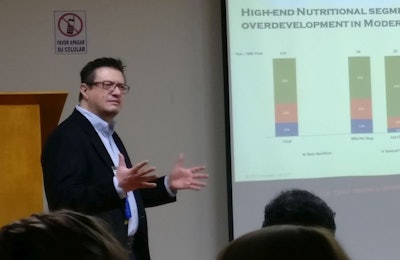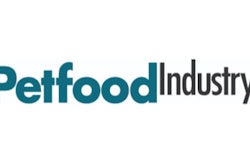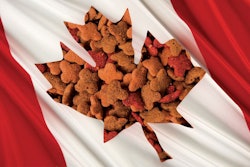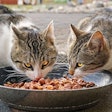
Small pet specialty stores dominated dog and cat food retail sales in Mexico during 2017, according to market research data by GfK. Within the Mexican pet food market, 58 percent of pet food retail sales occurred in small pet specialty stores, with a further five percent in pet shops and 12 percent in veterinary clinics. The rest of pet food retail sales in Mexico took place in public food markets, including supermarkets, (21 percent) and agricultural stores (four percent).
Arturo Valdez-Ambriz, consumer and retail director for GfK Mexico, presented that pet food retail sales data during Petfood Industry’s Tecnología de Alimentos para Mascotas (TAM): Innovación en Dietas Superpremium (Pet Food Technology: Innovation in Superpremium Diets) on December 5 in Ensenada, Baja California, Mexico.
Segmentation of Mexican pet food market retail sales
In total, the Mexican pet food market sold 121 thousand tons of pet food through retail channels. One hundred and eight thousand tons of this total were dog food.
Register for Petfood Forum 2018
As could be expected from its volume dominance, dog food made up the majority of sales in Mexican pet specialty stores, he said. Eighty-nine percent of total pet food sales in specialty retailers were accounted for by dog food.
Within the dog food segment in Mexico, dry dog food is the most prevalent form, making up 98 percent of total sales volume. Therapeutic dog food formulations have grown to nine percent of total sales volume.
For cat food, wet varieties make up a larger proportion than with dog food, Valdez-Ambriz said. Nine percent of cat food sales volume is of wet varieties. Therapeutic cat foods also enjoy a larger share of total sales volume that in dog food, with 12 percent of total cat food sales.
Pet ownership rising in Mexico
Between 2014 and 2017, self-reported pet ownership increased in Mexico by four percent such that now 82 percent of Mexicans own at least one pet, creating opportunities for the Mexican pet food industry, according to Valdez-Ambriz. GfK surveyed 825 individuals from across Mexico to find pet ownership trends.
Mexican households include 1.7 pets on average now, with 17 percent owning both a cat and a dog, he said. Both dog and cat ownership have shown statistically significant growth since 2014 in Mexico, he said. Of Mexican pet owners, 69 percent own dogs, up from 61 percent in 2014. Likewise, cat ownership grew from 23 percent of pet owners to 29 percent.
Petfood Forum 2018
To learn more about how pet ownership trends are influencing the global pet food market, and much more, attend Petfood Forum 2018. Petfood Forum provides an opportunity for pet food professionals from around the world to network, exchange ideas and do business with one another and with the industry's leading pet food manufacturers and suppliers. Petfood Forum 2018 will take place at the Kansas City Convention Center in Kansas City, Missouri, USA on April 23 -25, 2018.


















